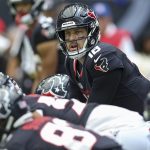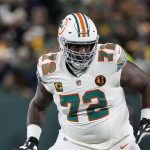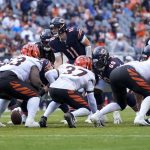Unfortunately for Cubs fans, Yu Darvish is no longer the only pitcher whose struggles belong in the headlines.
Last season’s blockbuster trade acquisition Jose Quintana has not at all picked where he left off after an effective second half on the North Side.
Quintana had a slow start in 2017 as well while he was pitching for the White Sox, will he be able to find a quick fix again this season?
A deeper look at the data tells us….
Probably, but the concerns are a bit more serious this time around.
VELOCITY
| Year | Fourseam | Sinker | Change | Curve | Cutter |
|---|---|---|---|---|---|
| 2012 | 90.79 | 90.80 | 85.84 | 79.04 | 87.93 |
| 2013 | 92.07 | 92.19 | 85.75 | 80.08 | 88.66 |
| 2014 | 92.32 | 92.10 | 86.33 | 80.94 | 90.75 |
| 2015 | 92.02 | 92.11 | 86.27 | 80.18 | 90.57 |
| 2016 | 92.56 | 92.53 | 86.65 | 77.99 | 90.81 |
| 2017 | 92.64 | 92.41 | 86.55 | 77.46 | 0.00 |
| 2018 | 91.88 | 91.90 | 86.90 | 76.89 | 0.00 |
The above chart from Brooks Baseball shows us Jose Quintana’s velocity per pitch throughout his career. As you can see his four-seam fastball and sinker velocity have sat steadily over 92 mph the last two seasons, and haven’t been below 92 mph since his rookie year. So far this season it’s been a different story and he’s paying for it.
Opponents are hitting .314 and slugging .500 against his fastball, whereas those numbers sat at .214 and .328 last season. Opponents are also slugging a whopping .583 against his sinker. That is #bad.
It’s not just discouraging that his fastball numbers are bad, it’s that they’re bad AND he’s using his four-seamer almost half of the time, as opposed to his 35.11% four-seam usage last season.
So that begs the question, why is he using his fastball so much more often if he’s throwing it slower and getting hit harder?
COMMAND
Entering the year, Quintana’s career-worst walk rate was 7.7%. Right now his walk rate is 11.2%. His spike in walks can be largely credited to his lack of curveball command.
Quintana's velocity has been normal lately. His curveball has 3x more movement compared to last season. But his command of the curve been abnormaly poor. That's contributed to a 50% lower whiff rate and more hard-hit balls. https://t.co/MTLmZOfYSp
— Brendan Miller (@CubsRelated) May 15, 2018
Lack of curveball command has forced him to go to his fastball more often when ahead in the count, and it’s nearly eliminated the option of going to his curve for a first-pitch strike. He’s also getting swings and misses on only 8.02% of his curves, by far the lowest mark of his career.
THE TAKEAWAY
While the velocity dip is new, the curveball command is what got him in trouble during the first half of last year, and he fixed it. Considering his and pitching coach Jim Hickey’s track records, it should be just a matter of time before they detect what’s wrong with his curve before fixing it again this time around. Yes, loss of command *could* be an indicator of legitimate decline(GASP). But like I said, his track record and age (still just 29) make it unlikely that that’s the case.
Also encouraging? Despite lacking his best stuff and command thus far, only one opponent has given him serious trouble.
In two starts vs the Braves this season, José Quintana has a 16.71 ERA, including 6 ER allowed today. In his 6 starts against all other teams, he has a 2.88 ERA pic.twitter.com/lYTiSGLAr0
— ESPN Stats & Info (@ESPNStatsInfo) May 14, 2018
The fact that he’s been able to, mostly, avoid disaster thus far is significant.
There’s one other thing that Cubs fans should keep in mind. Last season Jake Arrieta had a 5.44 ERA through eight starts with declining velocity. By August, his fastball velocity was up a full mph, his slider was up two full mph, and as a result he won NL pitcher of the month and finished the season with a 3.53 ERA.
Hmm, it’s almost like good pitchers coming off a short offseason have struggles sometimes.
The point is, these things happen. A slight velocity dip isn’t the end of the world for a guy coming off his fifth straight 200 inning season. Trust the body of work, trust the track record, and most importantly, trust that he’ll succeed because the man that traded for him 10 months ago isn’t wrong about these things very often.












